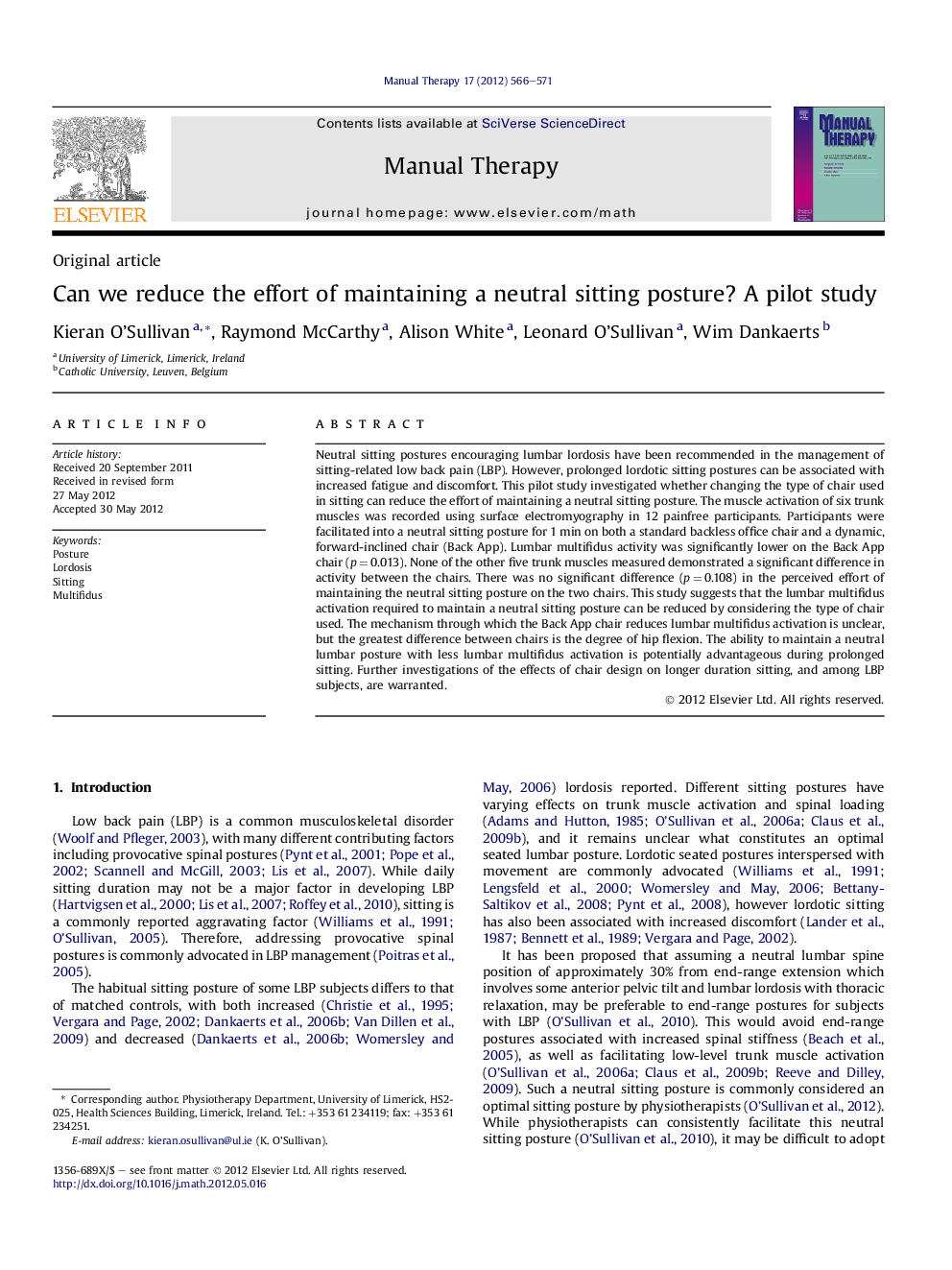| Article ID | Journal | Published Year | Pages | File Type |
|---|---|---|---|---|
| 5864825 | Manual Therapy | 2012 | 6 Pages |
Neutral sitting postures encouraging lumbar lordosis have been recommended in the management of sitting-related low back pain (LBP). However, prolonged lordotic sitting postures can be associated with increased fatigue and discomfort. This pilot study investigated whether changing the type of chair used in sitting can reduce the effort of maintaining a neutral sitting posture. The muscle activation of six trunk muscles was recorded using surface electromyography in 12 painfree participants. Participants were facilitated into a neutral sitting posture for 1 min on both a standard backless office chair and a dynamic, forward-inclined chair (Back App). Lumbar multifidus activity was significantly lower on the Back App chair (p = 0.013). None of the other five trunk muscles measured demonstrated a significant difference in activity between the chairs. There was no significant difference (p = 0.108) in the perceived effort of maintaining the neutral sitting posture on the two chairs. This study suggests that the lumbar multifidus activation required to maintain a neutral sitting posture can be reduced by considering the type of chair used. The mechanism through which the Back App chair reduces lumbar multifidus activation is unclear, but the greatest difference between chairs is the degree of hip flexion. The ability to maintain a neutral lumbar posture with less lumbar multifidus activation is potentially advantageous during prolonged sitting. Further investigations of the effects of chair design on longer duration sitting, and among LBP subjects, are warranted.
